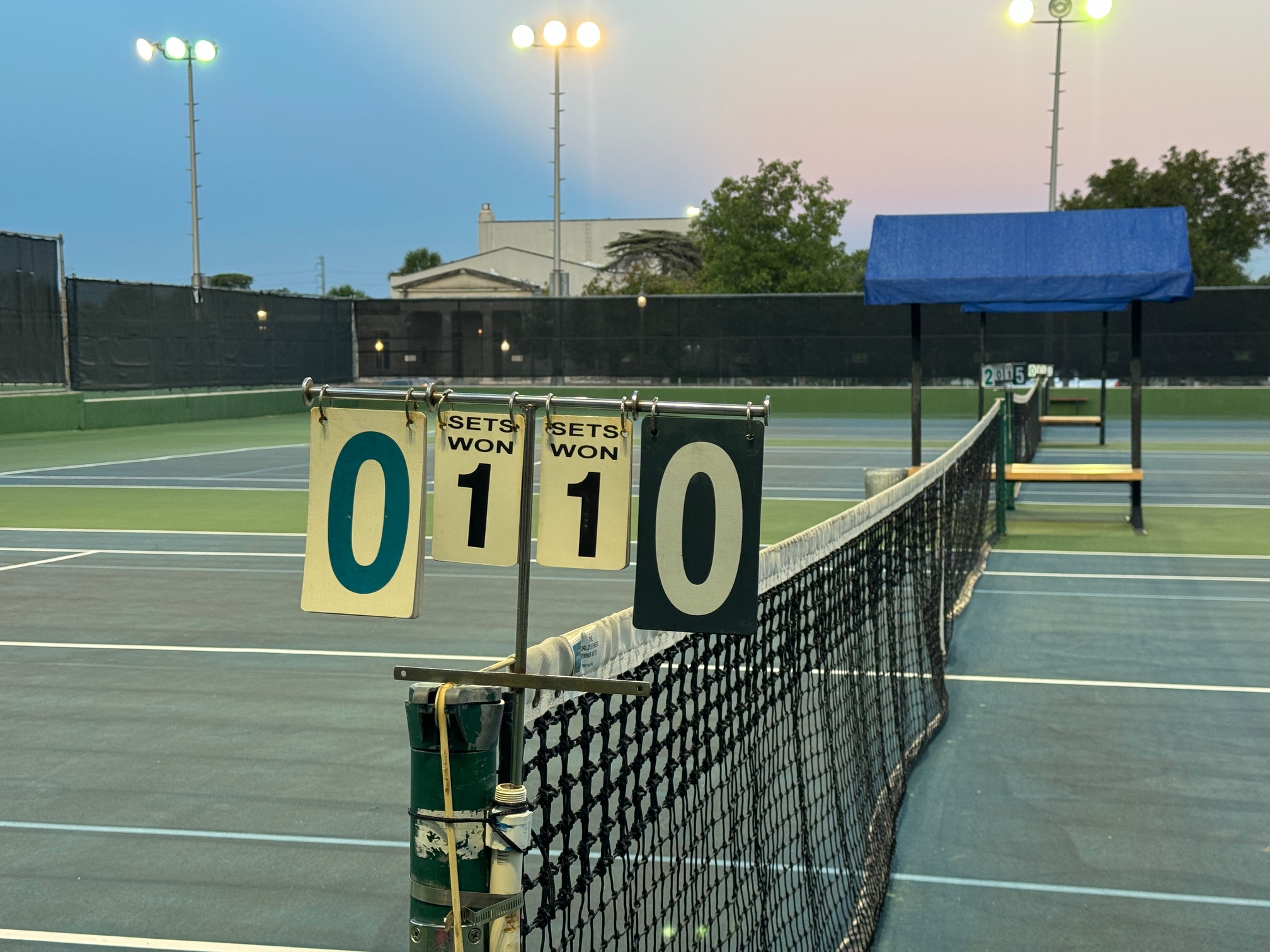The “Less Tennis… Less Points” post from a couple of weeks ago sparked additional ranking points questions from people who recently played in other divisions at the NTRP National Championships. Specifically, some players were wondering why their points did not align with the example calculations. There is a very simple, but somewhat counterintuitive answer, to those questions.
Get set for yet another go-around on the USTA Adult Tournament Ranking System’s metaphorical hamster wheel. Today we will compare and contrast the 18+ Women’s 4.5 and 5.0 Singles draws from the (fairly) recently completed 2023 USTA NTRP Nationals in San Diego. Players that competed in both that event and the 18+ 4.5 Women’s Doubles tournament a couple of weeks later, observed that their point totals were wildly different between what ostensibly seems to be equivalent performance.
Most players in my immediate orbit seem to share the same basic ideas about a “good” tournament ranking point system. It happens to be consistent with the design principles that I outline on this site on a frequent and recurring basis. They might not express it exactly the same way, but the following two statements generally align with their expectations of a tournament cumulative ranking point system.
- The format of the draw selected by tournament organizers should not materially alter the rankings points earned for relative performance in the event.
- Players should not be penalized for receiving byes when rankings points are calculated for tournament performance.
The ranking point tables in the USTA Adult and Family Tournaments Ranking System document contain different values for some (but not all) of the officially supported draw formats. That fundamentally violates principle #1.
Additionally, the 2-stage tournament format, featuring a preliminary Round Robin followed by a second stage of competition, penalizes players for receiving byes in either stage. That fundamentally violates principle #2.
The Top 6 Side by Side
The following table summarizes the top 6 finishers in each respective division along with the rankings points awarded at the tournament per the player records as of May 11. The final column reflects the difference in points awarded between the equivalent finishers in each division. It is readily apparent that, with the exception of the 6th place finisher, the 4.5 players received a lot less points than their 5.0 counterparts.
| OOF | 5.0 Player | 5.0 Pts | 4.5 Player | 4.5 Pts | +/- |
| 1 | Young | 3000 | Sweatt | 2000 | -1000 |
| 2 | Tabakin | 2100 | Berry | 2000 | -100 |
| 3 | Lee | 1800 | Souissi | 1693 | -107 |
| 4 | Gaucel | 1500 | Valdez | 1050 | -450 |
| 5 | W-Hillman | 1050 | Marmol | 693 | -357 |
| 6 | Dundon | 0 | Judice | 462 | +462 |
The point totals are all correct per the USTA Adult and Family Tournaments Ranking System. The disparities are because the draw format was different between the two divisions. The 5.0 Singles draw was a 6-player single pool Round Robin.
The 4.5 Singles event had 13 entries, which is a very unlucky number. The tournament director made the decision to conduct the event with three preliminary Round Robin groups. One pool had 5 players, and the other two had 4 competitors. Additionally, the tournament director opted for an 8-person bracket, with two byes in the Championship stage. (That is arguably the best way to conduct this type of tournament when there are 13 players. I would have most likely done exactly the same thing.)
That means that the “Round Robin Preliminary Rounds & SE Draw of 8 Playoff” table from the USTA Adult and Family Tournaments Ranking System is applicable to that division. Each win in the preliminary rounds of a Level 1 tournament in this format is worth 231 points up to a maximum of 693. In the second stage, the Championship bracket matches are each worth 769 points up to a maximum of 2307.
To point out a subtle incongruity, the “SE” in the title “Round Robin Preliminary Rounds & SE Draw of 8 Playoff” stands for “Single Elimination.” However, this bracket has a consolation draw, as evidenced by the fact that each of those matches is worth 231 points up to a maximum of 693. That isn’t Single Elimination. However, the only consolation round implemented in this tournament was the 3rd-4th playoff.
Rachel Sweatt was shorted 1000 ranking points en route to winning the National Championship Trophy. She was in one of the 4-player draws, but that still gives her a chance to win three matches to achieve the maximum of 693 points at that stage. However, she only went 2-1 in her group, finishing second to Michelle Valdez in that pool. Her performance in the first stage garnered her 462 points.
For reasons that I do not understand, but will nevertheless energetically speculate on in tomorrow’s post, Sweatt was “awarded” a bye in the Championship Bracket. That means that she only had a chance to win two matches at that stage, which she obviously did since she won the Championship. Those two wins were worth 769 points for a second stage total of 1538. That, combined with the 462 points from the first stage, yielded a total of 2000 points.
That happens to be the same number of points earned by second-place finisher Alli Berry. She also went 2-1 during the Round Robin stage and won two matches in the Championship bracket before losing to Sweatt in the Finals. However, since she was not “awarded” a bye at that stage, the two players point calculations are mathematically identical.
5.0, No Calculations Required
I can’t perform calculations for the 5.0 finishers because a single pool Round Robin uses an “Order of Finish” approach in that table. The players simply complete all the matches and then are awarded points based on how they ultimately placed in the competition.
For anyone interested (and who also has image downloads enabled), the following table is a screenshot from the Adult and Family Tournaments Ranking System that illustrates the elegant simplicity of an Order of Finish approach.

The frustrating thing is that there is absolutely no reason why an Order of Finish approach cannot be used for the two-stage tournament format. It would instantly solve all the problems that the historical gyrations in the ranking point tables have been trying to fix. Quite simply, a points-per-round system will never fully work for the two-stage tournaments.
Unfortunately, I have no reason to believe that this genre of post pointing out the absurdities and disparities in the ranking point system in recent tournaments will cease to be a recurring theme on this site anytime soon.
Finishing Shots
A player who receives a “bye” in the Championship stage systematically does not have a chance to win the number of points that should be logically awarded for winning the tournament. That’s absurd. Tomorrow’s post will further explore additional ramifications of those second-stage byes.
- 2023 USTA Adult Tournaments Ranking System, USTA hosted document, last viewed April 28, 2023.
- USTA Adult and Family Tournament, Ranking, & Sanctioning Regulations, USTA Regulation, as amended July 31, 2021. (Editorial note: Assumed to be current. This is the one off the USTA “About Adult Tournaments” page.)
- Friend at Court: The Handbook of Tennis Rules and Regulations, USTA, 2023




I enjoyed this whole series of posts, thanks! I agree – I would prefer the order of finish awarding of points for the sake of fairness and consistency.